How the US military's opium war in Afghanistan was lost
- Published

The US has spent $1.5m (£1.15m) a day since 2001 fighting the opium war in Afghanistan. So why is business still booming?
It's November 2017. The night vision camera shows a network of streets in a town in Helmand province, the poppy-growing centre of Afghanistan.
The camera wheels around the targets before the missiles come arcing in.
There are nine strikes in total, each one taking out an individual building in a series of almost simultaneous explosions.
This is a jaw-dropping example of precision bombing, using some of the most advanced military technology ever devised, including a B-52 strategic bomber, an F-22 Raptor stealth fighter and an M142 tactical rocket launcher.
Airstrike in Afghanistan's opium capital kills eight civilians
The video of this attack, in which eight Afghan civilians were killed, was one of a series published online by the American military, external - vivid evidence of the progress of a year-long bombing campaign code-named "Iron Tempest".
The objective was to take out the heroin laboratories at the heart of the Taliban's $200m-a-year opium trade, and it was to involve some 200 similar strikes.
But, according to new research from the London School of Economics, external, Operation Iron Tempest was not what it seemed.
The study found that, despite excellent intelligence, the multi-million-dollar campaign was having a negligible effect on the Taliban and the drug trafficking networks in Afghanistan.

So, what were the Americans actually attacking?
That was the question Dr David Mansfield asked himself when he first watched that opening salvo in the campaign.
"It was bizarre," he says. "I was sitting in the UK, more than three and a half thousand miles from Afghanistan, watching these incredible attacks unfold. The technology the Americans were using was stunning. These bombs seemed to be going in with pin-point accuracy but I was just thinking 'what is the target here?'"
Dr Mansfield has studied the Afghan opium industry for more than two decades. He says heroin production leaves certain tell-tale signs and he wasn't seeing any of them.
Yet American Forces were claiming the attacks were a success.
It would take months of careful detective work using the kind of expertise usually employed by the military - advanced mapping technologies, geospatial analysis of satellite images, as well as dogged investigation on the ground - before Dr Mansfield felt he understood what was happening.
His conclusion is surprising. Despite the incredible resources the American military were pouring in, Dr Mansfield and his team are now convinced that the US Air Force was using 21st century fighter jets to bomb little more than mud huts.

A booming heroin industry
Opium is woven deeply into the fabric of the conflict in Afghanistan, now the longest war in American history.
The profits from the heroin it produces are used to fund the Taliban, as well as terrorist groups like the so-called Islamic State and Al Qaeda.
And heroin also drives the rampant corruption that is so corrosive to civil society in Afghanistan.
It was clear just how institutionalised poppy cultivation has become when, in 2016, I travelled to an opium farm in what was supposed to be a government-controlled area.
The farmers did not feel any need to try and disguise what they were growing, as thousands of swollen opium poppy heads nodded cheerfully in a field just half an hour from Mazar-e-Sharif airport, and right beside the main road.
The poppies had been scored the night before and overnight the sap had oozed out under a dark scab. Five or six men were working their way steadily through the plants, scraping the sticky latex from the bulbs with a sickle shaped tool, their shalwar kameez brown with opium stains.
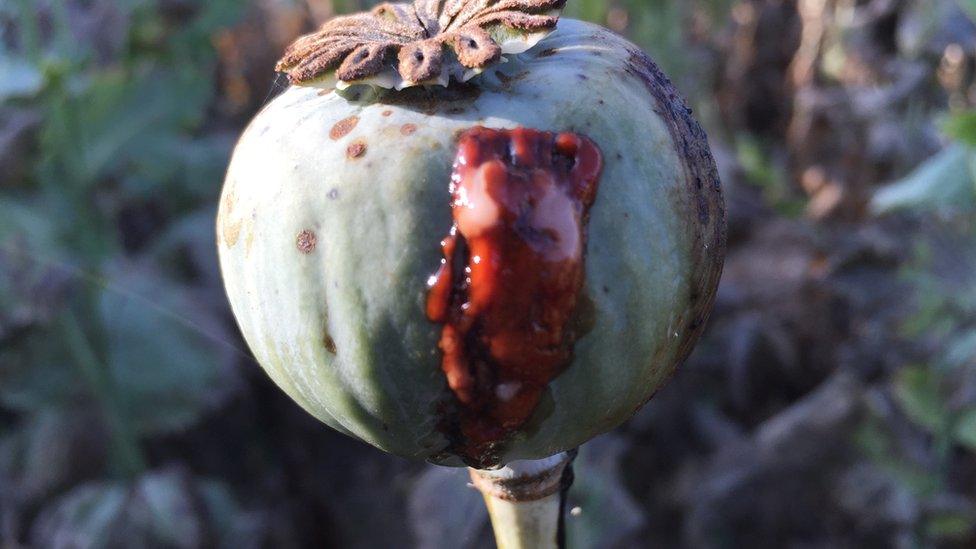
A poppy oozing sap, that will eventually be cooked down into heroin
The farmer, Taza Meer, was at ease under the protection of an ominous looking man with an AK47 slung over his shoulder.
"Don't worry about him", he reassured. "He's the local policeman."
Growing opium is a very serious crime in Afghanistan, punishable with death, yet here was a policeman welcoming a BBC reporter to a poppy field at the height of the harvest.

Record output
By 2017, the evidence of the Allied failure to contain opium production had become impossible to ignore.
Four days before Iron Tempest began in November 2017, the UN Office on Drugs and Crime (UNODC) had announced that poppy cultivation had risen more than 120,000 hectares in a single season.
When US and British forces invaded Afghanistan in October 2001 poppies were grown on around 74,000 hectares - 285 square miles.
The new figures showed production had increased more than four-fold in 15 years: now opium was being grown on 328,000 hectares - 1,266 square miles.
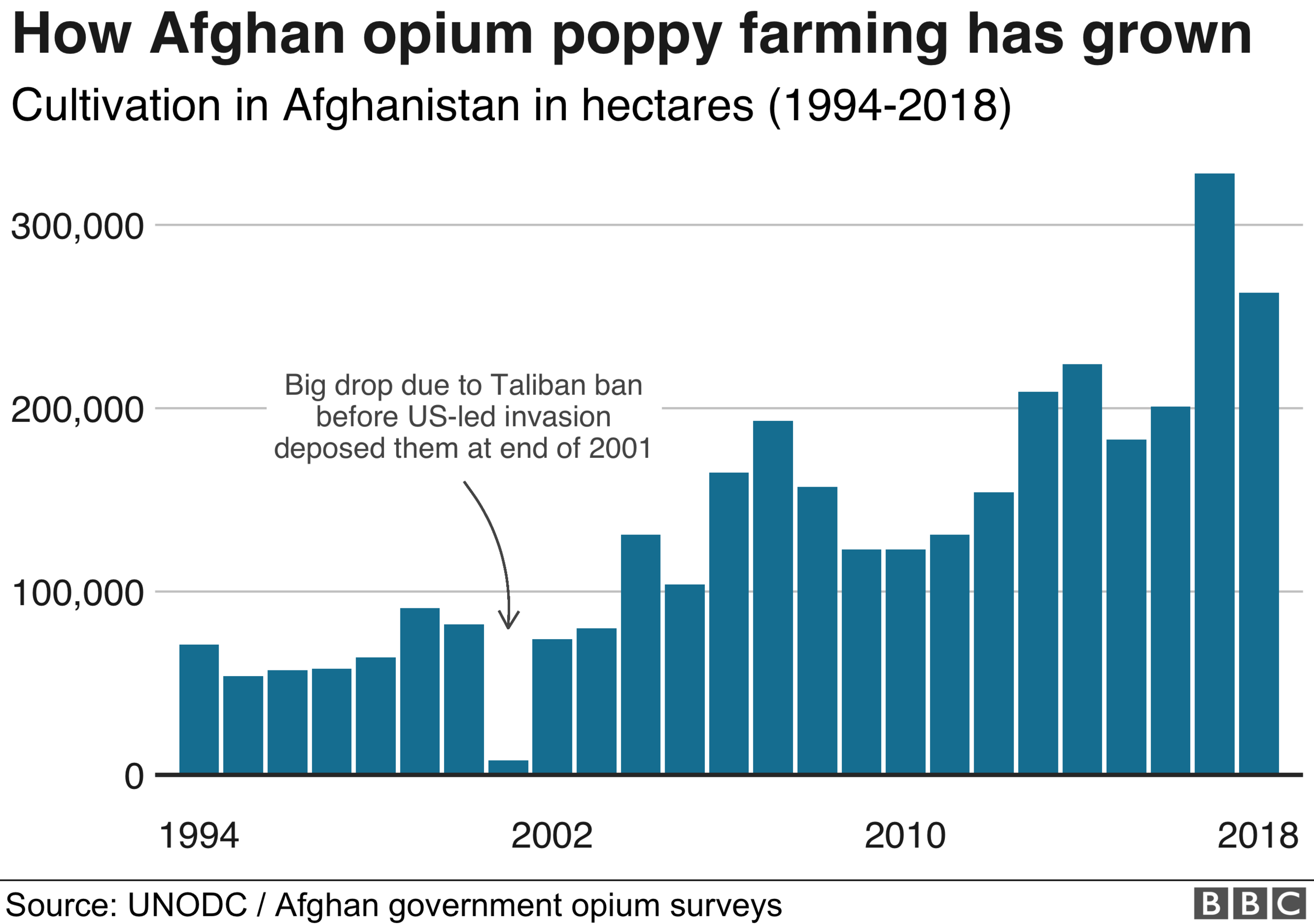
And there had been another change too. In the past the opium latex would be dried and smuggled out of Afghanistan as a sticky paste to be refined elsewhere.
Now Afghan and western officials were estimating that half, possibly more, of Afghan opium was being processed either into morphine or heroin.
It made smuggling easier and also massively increased the profits for drug traffickers and the Taliban, who are reckoned to take a "tax" of about 20% of profits.

Effect on US streets
This spike in heroin production came at a time when America was struggling to contain its own opioid crisis.
The White House declared it a national public health emergency in October 2017. More than two million Americans are addicted to opioids, and opioid overdoses have become the leading cause of death in America, ahead of car crashes and gun violence.
The American epidemic began with prescription drugs but, as the rules around prescribing opioids were tightened, addicts had been increasingly turning to heroin, as well as synthetic opioids like Fentanyl.
On America's trail of destruction
And, of course, Afghanistan is by far the biggest producer of opium in the world. According to the US military, 90% of the world's heroin is made from opium grown in Afghanistan.
It makes up 95% of the market in Europe; 90% of the Canadian market. Perhaps surprisingly, Afghan heroin is reckoned to make up only a tiny fraction of the US market. The US Drug Enforcement Agency claims as little as one per cent of US supply is from Afghanistan. It says virtually all the heroin used in America comes from Mexico and South American countries.
But, as with any commodity, if there's more of it on the market, the cost will fall, and US drug enforcement was growing afraid that burgeoning production in Afghanistan would increase world supply and push prices down, making it even more accessible to Americans.

Military action
The logic of Iron Tempest was simple.
"We're hitting the Taliban where it hurts, which is their finances," explained the commander of forces, General John Nicholson, in a press conference the day after the first wave of bombing.
Around 60% of the Taliban's finances come from the narcotics trade so attacking the drug trafficking networks that operate throughout Afghanistan should reduce the insurgents' revenues, as well as reducing heroin supply worldwide, military planners assumed.
They were inspired by action the US had taken in Syria, where aerial bombings targeting the Islamic State group's illegal oil industry had destroyed rigs, tanker trucks and other heavy machinery.
The campaign had been celebrated for its success, dramatically reducing the so-called Caliphate's revenues and making it hard for it to pay its fighters.
But, as is so often in the history of the conflict in Afghanistan, this campaign wouldn't be as straightforward as the military planners had hoped.

Bake Off v Breaking Bad
Heroin production in Afghanistan is not an industrial process, says Dr Mansfield.
The makeshift workshops where Afghans refine opium should not really be described as "laboratories", he says.
"This is more Bake Off than Breaking Bad".
There are no white coats, Bunsen burners or sterile rooms. Heroin is usually made in an ordinary Afghan housing compound - a mud outer wall with up to six, usually mud-built, buildings inside.
And, because it involves noxious fumes, it usually takes place in the open or under a lean-to.
That makes the process hard to hide, says Dr Mansfield, because it leaves a distinctive pattern of firepits, usually in rows.

An active site will also have piles of oil drums, maybe a press to extract the morphine, fuel - gas canisters, coal or wood - for the fires, and barrels containing chemicals, as well as people and vehicles coming and going.
The US military released 23 videos showing attacks on supposed heroin labs. Dr Mansfield says it was clear just from looking at them that there was no significant heroin production at the vast majority of them.
"I just wasn't seeing the tell-tale signs of activity," he says.

An eye in the sky
But Dr Mansfield knew if he was going to make a convincing case, he would need more evidence.
And he reckoned he knew just the people to help. He put in a call to Alcis, a tech start-up in the UK that specialises in using geospatial analyses to find out what is happening in remote locations.
Dr Mansfield tasked the Alcis team with identifying the locations the Americans had bombed - the grid coordinates had been redacted from virtually all the videos.
Once they had worked out where a strike had been they could use the huge archive of satellite images of Afghanistan to try and workout what had been happening at the location beforehand.
It was not easy, but Alcis managed to identify 31 buildings and, in some instances, the level of detail they were able to provide was startling.
See how a heroin lab in Helmand takes shape
In fact, of all the sites examined by Alcis and Dr Mansfield just one was definitely producing drugs when it was hit - two adjacent compounds, containing about 200 barrels.
Thermal images showed the barrels coloured white, indicating they were hot and actively in the process of refining heroin.
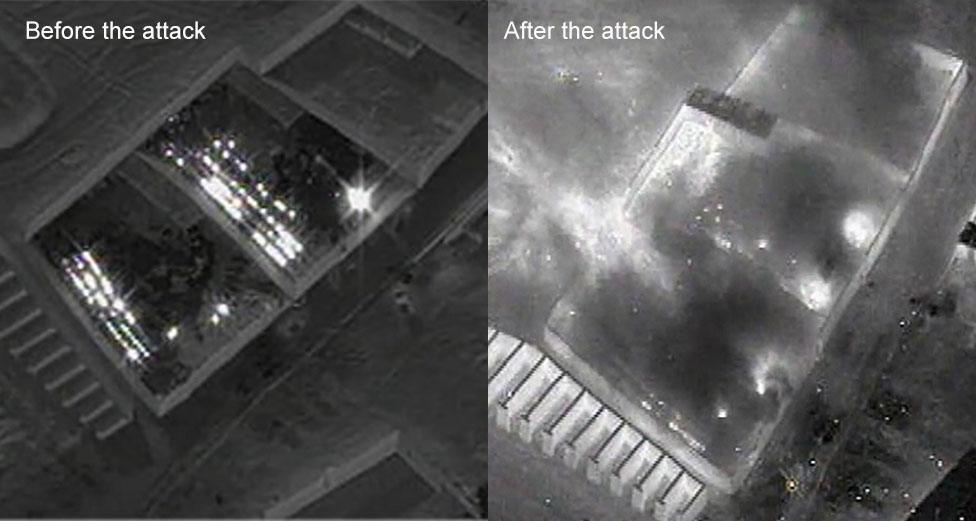
Before and after an attack on an active heroin-producing compound on 28 April 2018

Boots on the ground
Now that Dr Mansfield knew the locations of some of the attacks he could dig a bit deeper.
He got a team of Afghan researchers to interview people in the communities affected by the strikes. They spoke to lab owners, operators and workers, as well as 450 farmers across Helmand and other opium producing areas.
The interviews showed that US Forces' intelligence was good. Most of the sites the researchers examined had been used as heroin labs in the past, but - and here's the thing - overwhelmingly they had not been active at the time of the attacks.
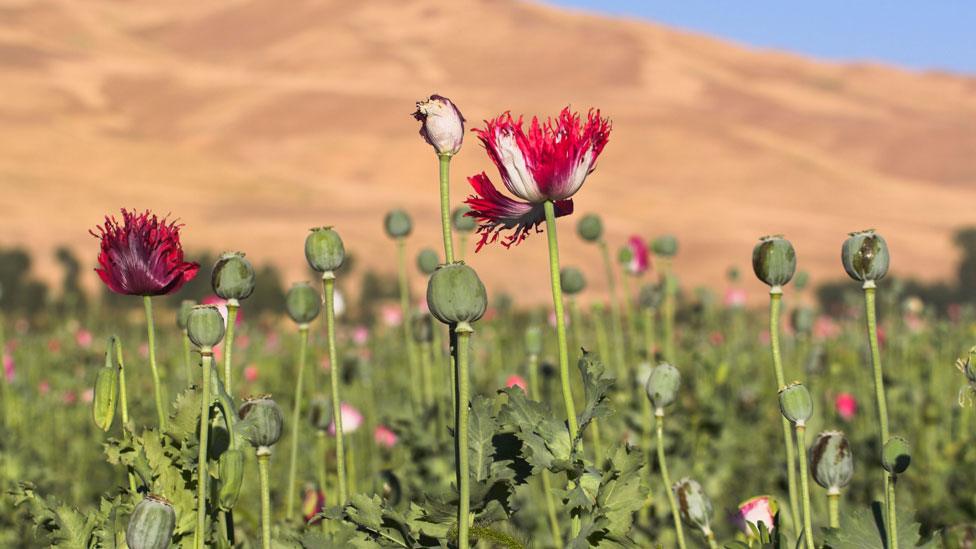
The interviewees said the labs operated intermittently, perhaps half the time, and that virtually all the materials used in heroin production were removed when they were dormant. New labs could also be set up within a few days, meaning as soon as one lab went out of commission, a new one could pop up.
Without significant stores of heroin, or the chemicals and equipment used to make it in the dormant labs, their value as targets was negligible.
Dr Mansfield and his team estimate about $10,000-$20,000 per compound, at most.
"What is the loss to a drug trafficking organisation when you essentially hit a building, a mud compound?", he asks with a shrug.
So why bother attacking them?
"That's a tough question", says Dr Mansfield. "I think the commanders in Afghanistan were being told by their bosses in Washington that action had to be taken and I think they were being careful, they didn't want any more civilian casualties."

A change of command
Dr Mansfield is not the only one to question the strategic value of this operation. Early on in the campaign, some senior US officials were uncomfortable about the way it was being waged.
A few months in and Air Force Secretary Heather Wilson was clearly worried about the cost.
"We should not be using an F-22 to destroy a narcotics factory in Afghanistan," she told a conference in February 2018.
The F-22 is the most advanced stealth fighter in the world. Each aircraft costs $140m dollars and it costs at least $35,000 an hour to fly.
By August last year Lt General Jeffrey Harrigian, the head of US Air Forces' Central Command in Doha, was anxious that the policy of attacking revenue sources in Afghanistan was "not working as well as in Syria".
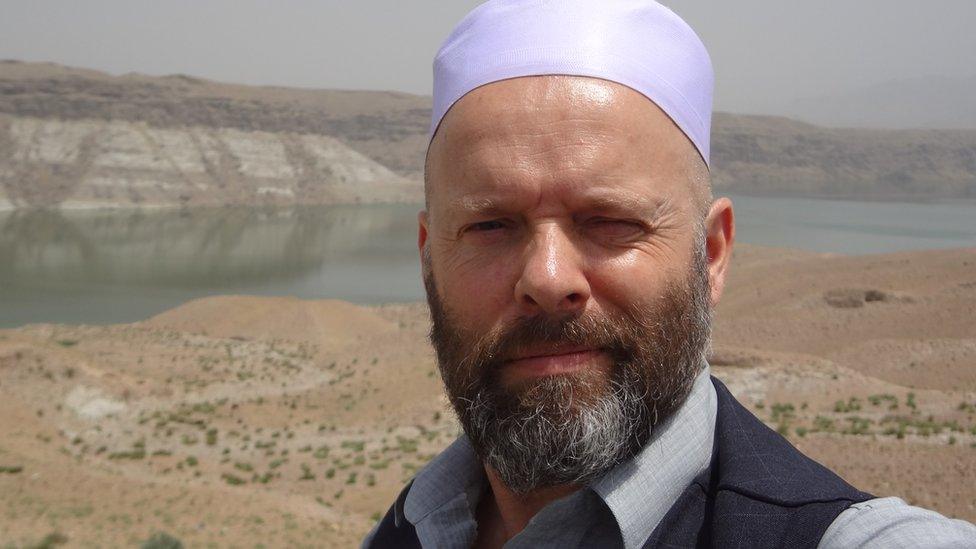
Dr David Mansfield, a leading expert on heroin production in Afghanistan
Then, on 2 September 2018, General Nicholson was replaced as commander of Nato and US forces in Afghanistan by General Austin "Scott" Millar.
That pretty much marked the end of the campaign, with only two more strikes on alleged heroin labs.
Instead, General Millar has developed a more aggressive strategy of targeting the Taliban directly with airstrikes and raids that US Forces describe as "designed to get them to the negotiating table by persuading them the war cannot be won".
"Why bomb heroin labs when we can kill Taliban fighters?" an American officer in Kabul told the BBC. "We find that is more effective."
The ultimate aim is a peace settlement between the Taliban the Afghan government.
When US Forces in Kabul were asked to respond to Dr Mansfield's findings, the BBC got a terse reply.
"All of our efforts are aimed at setting conditions for a political settlement and safe guarding our national interests", a spokesperson said. "The grand majority of our strikes are lethal strikes against the Taliban or ISIS."
She would not comment on whether the US Air Force was deliberately hitting inactive targets to avoid further civilian casualties.

So what effect did Iron Tempest have on narcotics production?
The answer is very little. When the air campaign ended, the US military reported that "narcotics production in Afghanistan remained at elevated levels."
And the latest UN survey shows, external opium was grown on 263,000 hectares in 2018 - 20% down from 2017.
But that decline wasn't because of military action.
The UN says poppy production has fallen because of a severe drought in the north of the country and significantly lower prices after 2017's record crop.
The Special Inspector General for Afghanistan Reconstruction (SIGAR), John Sopko, does not mince words, labelling Afghanistan a "narco-state".
He hopes the current talks between US official and the Taliban will lead to some kind of peace settlement but believes the growth of this vast opium economy has made Afghanistan increasingly unstable.
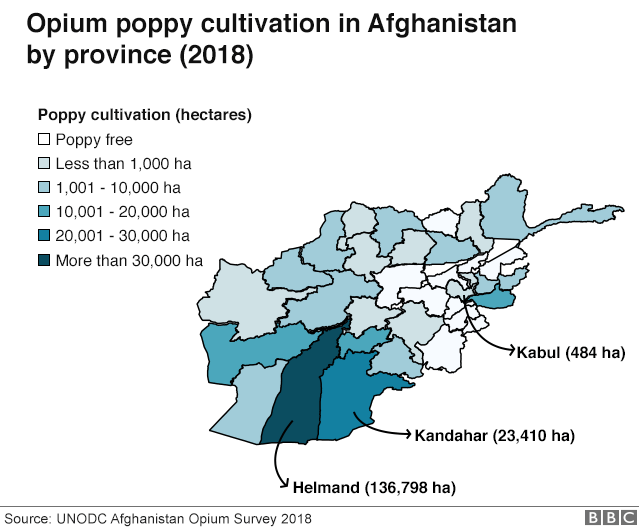
Opium now accounts for around a third of Afghanistan's GDP, he says. It is by far the country's biggest cash crop and provides almost 600,000 full-time jobs.
This, despite the fact that the US military has spent $1.5m a day on counter narcotics since the invasion in October 2001, or almost $9bn.
And remember, that is on top of the more than $1 trillion spent fighting the war itself.
"To put it bluntly", he says, "these numbers spell failure."
- Published14 July 2019
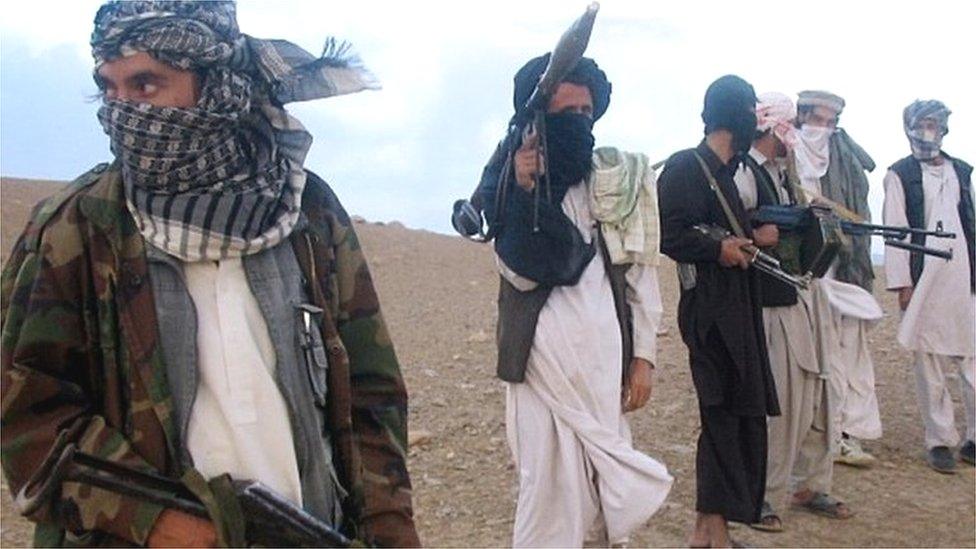
- Published24 October 2018

- Published28 August 2021
